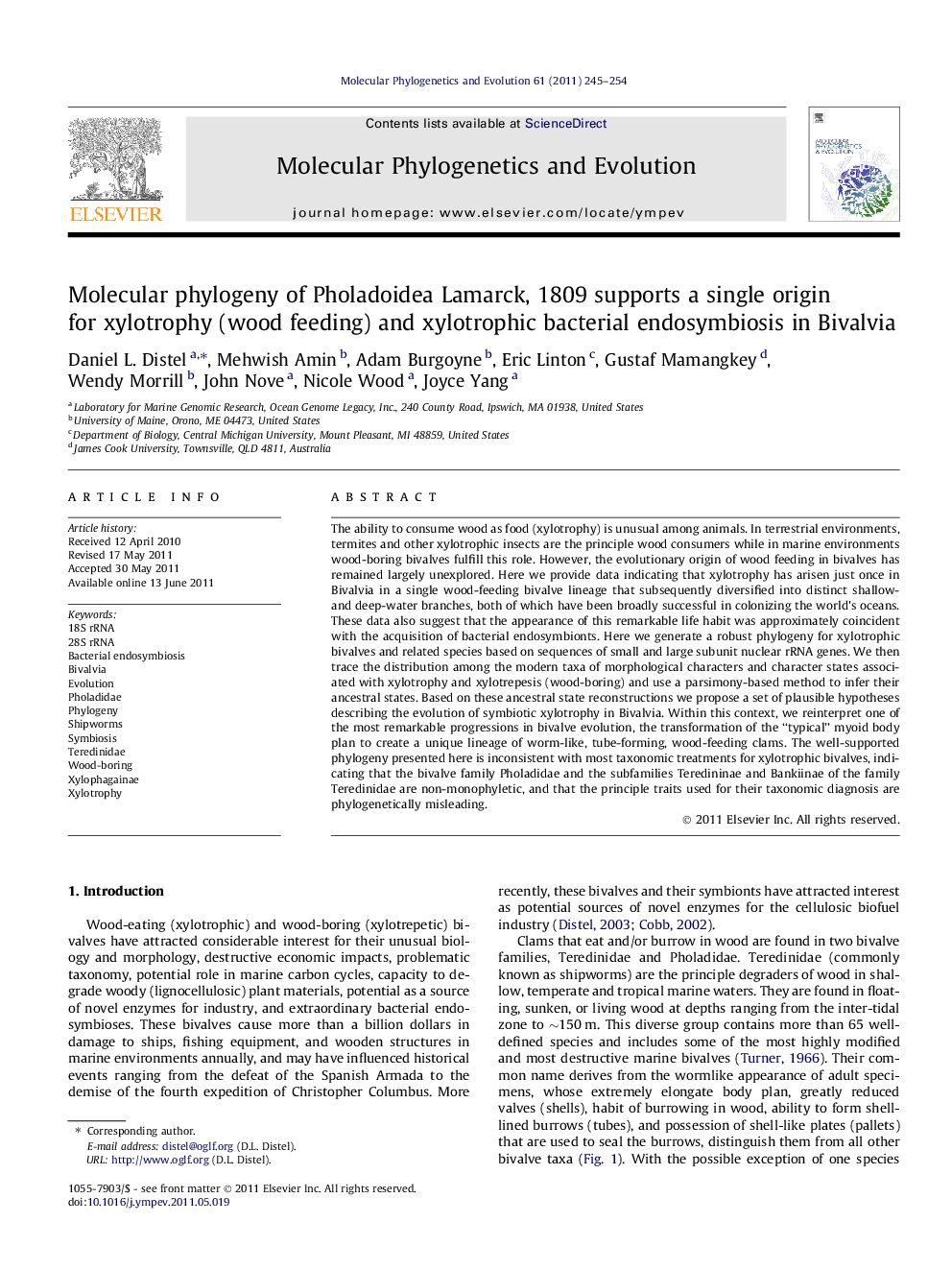| کد مقاله | کد نشریه | سال انتشار | مقاله انگلیسی | نسخه تمام متن |
|---|---|---|---|---|
| 2834010 | 1164282 | 2011 | 10 صفحه PDF | دانلود رایگان |

The ability to consume wood as food (xylotrophy) is unusual among animals. In terrestrial environments, termites and other xylotrophic insects are the principle wood consumers while in marine environments wood-boring bivalves fulfill this role. However, the evolutionary origin of wood feeding in bivalves has remained largely unexplored. Here we provide data indicating that xylotrophy has arisen just once in Bivalvia in a single wood-feeding bivalve lineage that subsequently diversified into distinct shallow- and deep-water branches, both of which have been broadly successful in colonizing the world’s oceans. These data also suggest that the appearance of this remarkable life habit was approximately coincident with the acquisition of bacterial endosymbionts. Here we generate a robust phylogeny for xylotrophic bivalves and related species based on sequences of small and large subunit nuclear rRNA genes. We then trace the distribution among the modern taxa of morphological characters and character states associated with xylotrophy and xylotrepesis (wood-boring) and use a parsimony-based method to infer their ancestral states. Based on these ancestral state reconstructions we propose a set of plausible hypotheses describing the evolution of symbiotic xylotrophy in Bivalvia. Within this context, we reinterpret one of the most remarkable progressions in bivalve evolution, the transformation of the “typical” myoid body plan to create a unique lineage of worm-like, tube-forming, wood-feeding clams. The well-supported phylogeny presented here is inconsistent with most taxonomic treatments for xylotrophic bivalves, indicating that the bivalve family Pholadidae and the subfamilies Teredininae and Bankiinae of the family Teredinidae are non-monophyletic, and that the principle traits used for their taxonomic diagnosis are phylogenetically misleading.
.Figure optionsDownload as PowerPoint slideHighlights
► We infer a phylogeny for xylotrophic (wood-eating) bivalves using molecular characters.
► We show that xylotrophy and xylotrophic endosymbiosis arose just once in bivalvia.
► We infer the characteristics of the ancestral xylotrophic bivalve.
► We show that Pholadidae, Teredininae, and Bankiinae are non-monophyletic.
► A principle diagnostic feature of teredinid species is phylogenetically misleading.
Journal: Molecular Phylogenetics and Evolution - Volume 61, Issue 2, November 2011, Pages 245–254